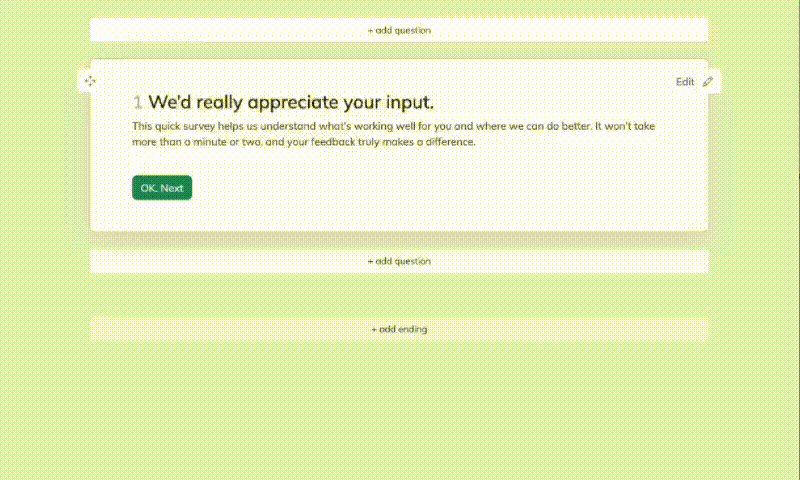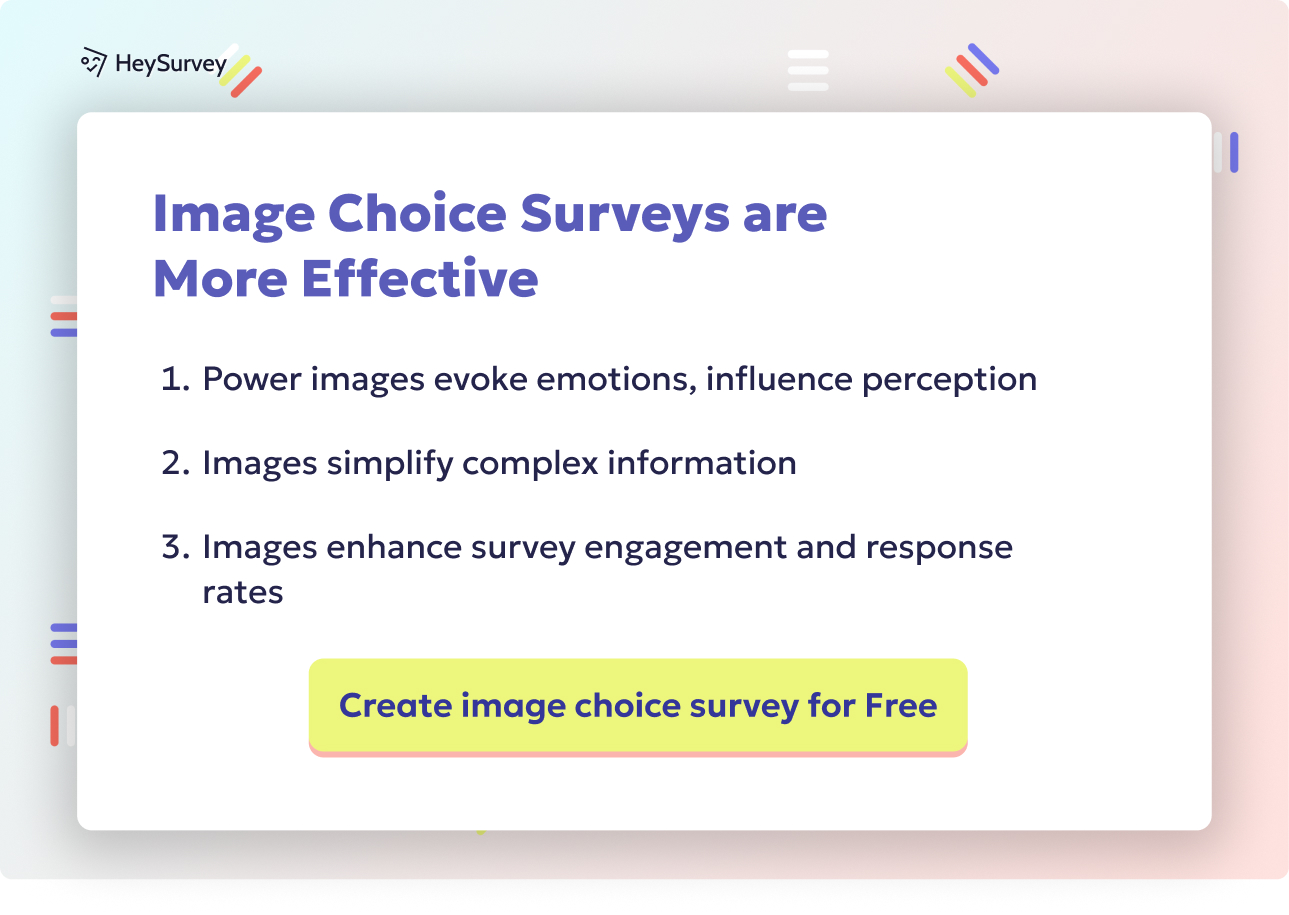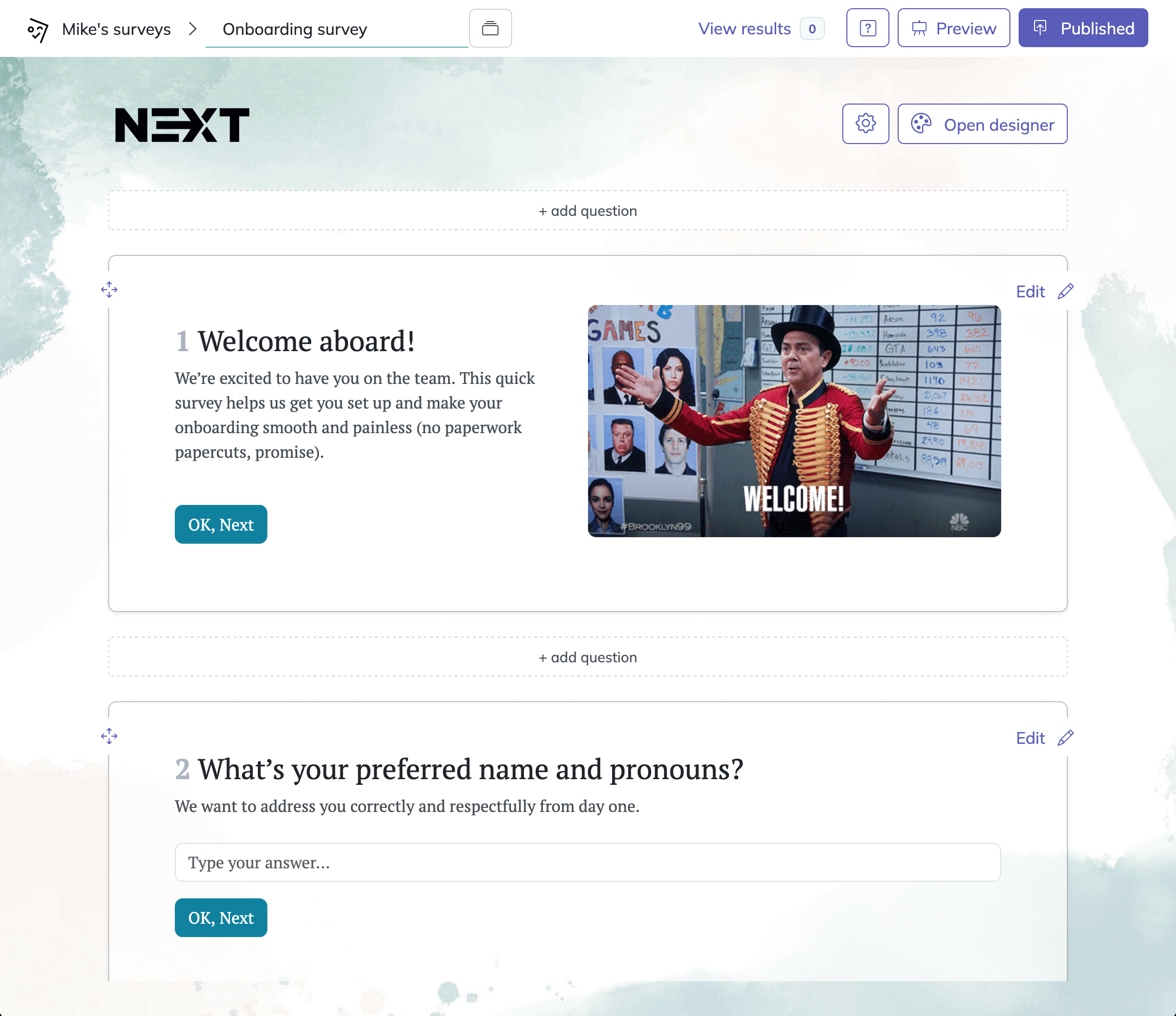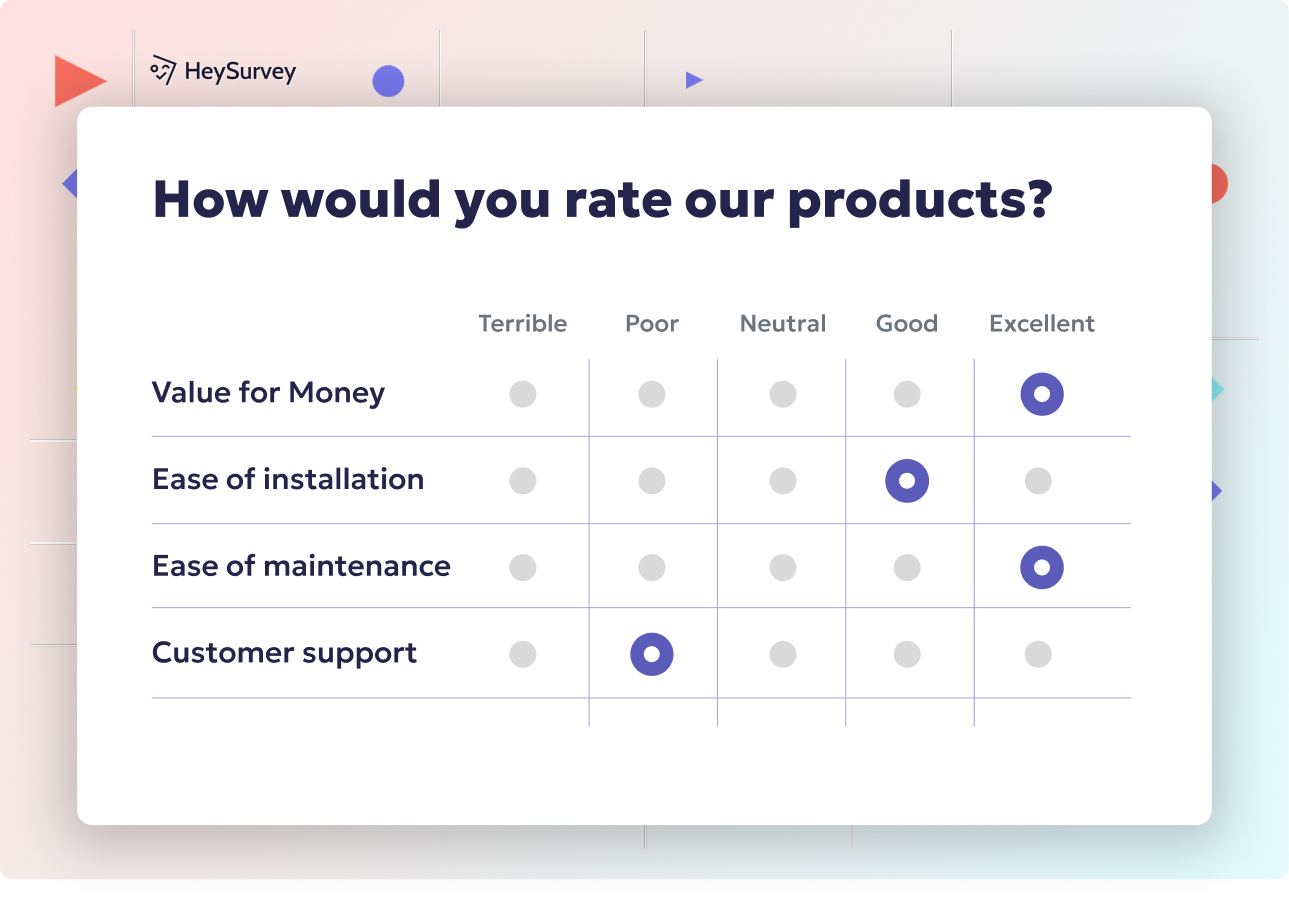29 Basic Survey Questions: Types, Examples & Best Practices
Discover 30+ sample questions and expert tips on basic survey questions—master types, use-cases, and best practices for clear results.
Basic survey questions are the unsung heroes of reliable research. Their familiar formats help us gather clear, actionable data—without confusing our audience or scaring them off mid-survey. When you want fast, mobile-friendly feedback from a broad mix of people, basic question types simply outshine fancier, more complex options. Discover the practical magic behind each format, learn how to write survey questions that get results, and grab actionable templates and survey best practices you can use anywhere.
Multiple-Choice (Single-Select) Questions
Multiple-choice single-select questions, also known as radio button questions or closed-ended survey questions, ask respondents to pick just one answer from a list. Each choice is mutually exclusive, and the question’s design makes analysis a breeze. Because participants can’t select more than one option, the data you collect is instantly clean and ready for comparison.
Why & When to Use
Use multiple-choice (single-select) questions when you want to gather data that is simple to analyze and only one answer makes sense per respondent. These questions keep surveys short—especially helpful on mobile devices. They’re a favorite for:
- Segmenting markets so you know who’s shopping
- Identifying a user’s primary interest or preference
- Determining most-used features or products
This question type shines in areas like market segmentation—you want to know if someone is an executive or a student, not both! It’s also perfect for measuring product choices or capturing user roles.
You’ll notice that these questions:
- Lead to highly structured data sets
- Speed up survey completion rates
- Make it easy for respondents to answer, even on the go
Sample Questions
Which of the following best describes your role in the company?
What is your primary reason for visiting our website today?
How often do you purchase organic produce?
Which subscription plan are you currently on?
What operating system do you use most frequently?
Multiple-choice single-select questions are advantageous due to their simplicity, ease of use, and ability to produce objective, easily analyzable data. (smartsurvey.co.uk)

Here’s how to create your survey using HeySurvey in just a few easy steps:
Step 1: Create a New Survey
Start by logging into HeySurvey—or start without an account if you prefer to explore first. Click the “Create Survey” button to begin. You can choose to:
- Select an empty sheet to build your survey from scratch, or
- Pick a pre-built template that closely matches your survey type for a quicker start, or
- Use the text input creation feature where you type questions and HeySurvey formats them automatically.
Once you make your selection, you’ll be taken to the Survey Editor, where you can name your survey and start building.
Step 2: Add Your Questions
Click “Add Question” at the top or between existing questions to insert your desired question types. HeySurvey offers all the basics you need:
- Multiple-choice (single-select) and checkbox (multiple-select) options
- Likert scales and numeric/star rating scales
- Yes/no (dichotomous) questions, ranking, and open-ended text fields
- Demographic questions like age, gender, or income
For each question:
- Enter your question text and add descriptions if needed
- Mark questions as required to ensure key answers are collected
- Customize choice options, add images from Unsplash or Giphy, and reorder as you like
- Use branching to guide respondents through relevant follow-up questions based on their answers
Feel free to duplicate questions to speed up the process or apply markdown formatting for clarity and style.
Step 3: Publish Your Survey
Once your questions are set and reviewed, click the “Preview” button to see how your survey looks on desktop and mobile. Make any final tweaks using the Designer Sidebar for colors, fonts, and layouts. When ready, hit “Publish” to activate your survey.
You will receive a shareable link to distribute your survey via email, social media, or embed it on your website. To publish and access results, you’ll need to create a free HeySurvey account if you haven’t done so already.
Bonus Steps to Level Up Your Survey
- Apply Branding: Upload your logo in the Designer Sidebar to keep your survey on-brand and professional. Choose colors and fonts that reflect your style.
- Define Settings: Set start and end dates for survey availability, cap response numbers, or create a custom URL to redirect users once they finish.
- Skip into Branches: Use branching logic to customize the respondent journey. For example, skip irrelevant questions or show different endings based on answers—making your survey smarter and more engaging.
Ready to dive in? Click the button below to open a handy survey template and start building your own survey with HeySurvey!
Checkbox (Multiple-Select) Questions
Checkbox questions, or select all that apply survey questions, give your respondents the power to pick more than one answer from a list. Unlike single-select, these are designed for situations where “all of the above” genuinely makes sense and exclusive categories just don’t cut it.
Why & When to Use
Use checkbox questions when it’s not fair to force a single choice, or when behaviors and preferences can overlap. They’re a must for feature wish-lists, cataloging symptoms, or asking what hobbies someone enjoys. This format is also great when you want to know:
- What tools or services integrate into a workflow
- All factors influencing a buying decision
- Every loyalty program benefit customers value
By using checkboxes, you get richer data on real-world complexity. Respondents feel understood because they aren’t limited by static categories.
Benefits include:
- Mapping users’ full scope of activities or tastes
- Allowing nuanced feedback on product features
- Seeing at a glance which options are most and least popular
Sample Questions
Which social media platforms do you use weekly?
What factors influenced your purchase today?
Which tools integrate with your workflow?
What genres of music do you enjoy?
Select the benefits you value in a loyalty program.
Research indicates that forced-choice questions yield higher endorsement rates and more accurate data compared to select-all-that-apply formats. (pewresearch.org)
Likert Scale Questions
A Likert scale question frames an answer as a degree or scale, like 5-point or 7-point agreement or frequency scales. With options ranging from “Strongly Disagree” to “Strongly Agree,” this format makes it easy to quantify feelings, beliefs, or satisfaction.
Why & When to Use
Likert scale questions are perfect when you want to measure attitudes, agreement levels, or satisfaction over time. These are your go-to for tracking employee engagement or monitoring how your brand is perceived. Suppose you want to see if customers are becoming more confident in your product after an update—Likert questions make before-and-after comparisons easy.
Ideal use cases:
- Employee pulse surveys to spot trends
- Customer feedback following a touchpoint
- Tracking repeated feedback across multiple timepoints
- Uncovering subtle shifts in satisfaction or attitudes
The beauty of Likert scale questions is that they provide rich, gradated data. You don’t just learn if someone is satisfied—you learn how much they’re satisfied.
Sample Questions
How strongly do you agree that our app is easy to navigate?
Rate your satisfaction with our customer support response time.
How likely are you to recommend us to a friend?
The checkout process was straightforward.
I feel valued as a customer.
Rating Scale Questions (Numeric & Star)
Rating scale questions—think 1-10 rating questions or 5-star sliders—quantify experiences, satisfaction, or likelihoods as a number or set of stars. These questions go beyond agreement, letting respondents indicate the strength or intensity of their feelings.
Why & When to Use
Turn to rating scale questions when you need a quick, visual measure of intensity. Numeric scores or stars give you clear, comparable data that translates directly to dashboards and reports. They’re especially helpful for quantifying Net Promoter Score (NPS), prioritizing features, or measuring service quality.
Advantages include:
- Responses are easy—just tap and go!
- Great for mobile-first surveys
- You instantly spot highs and lows in feedback with visual ratings
They work wonders when you want to:
- Pinpoint areas to improve (e.g., product images, customer service)
- Compare experiences across locations or events
- Get a fast read on brand promoters or detractors
Sample Questions
On a scale of 0–10, how likely are you to buy again?
Rate the image quality of our product photos.
How confident do you feel using our software?
Please rate the cleanliness of the facility.
How would you rate today’s webinar content?
Research indicates that rating scale questions are easy to understand and answer, leading to higher response rates and reduced survey fatigue. (smartsurvey.co.uk)
Dichotomous (Yes/No) Questions
Dichotomous questions, or binary survey questions, require a simple yes or no answer. They’re the absolute definition of straightforward—perfect when time, clarity, or eligibility is key.
Why & When to Use
Use binary questions when you want to screen respondents quickly or set up logic branching in your surveys. They’re critical for compliance verification, qualifying leads, capturing eligibility, or confirming action steps. These questions shine when:
- You need to filter in or screen out certain groups
- Only one correct answer exists for eligibility or compliance
- Fast, frictionless data collection matters
Binary survey questions are essential for quick decision points. Keep them neutral, and always place sensitive questions later in your survey flow.
Benefits include:
- Zero ambiguity—answers are black and white
- Makes funneling or skip logic easy to set up
- Minimizes respondent fatigue
Sample Questions
Have you purchased from us in the last six months?
Do you currently own a smart speaker?
Did this article answer your question?
Would you attend this event again?
Are you over 18 years old?
Ranking Questions
Ranking questions, or rank order survey questions, ask respondents to put several items in order—either through drag-and-drop or assigning numbers. This format helps uncover people’s preferences and priorities, not just their top pick.
Why & When to Use
Ranking is invaluable when you want detailed prioritization insight. If you’re weighing product features, delivery methods, or potential improvements, ranking tells you what really matters most (and least).
Ideal scenarios:
- Deciding which features to build next
- Understanding benefit trade-offs in compensation
- Clarifying what drives loyalty among options
There’s a catch: too many ranking items can overwhelm. Keep the list under seven to avoid cognitive overload—your data quality will thank you!
Key strengths:
- Clear window into what people value most
- Supports product road-mapping and marketing
- Great for small, focused lists of options
Sample Questions
Rank these features from most to least important.
Order the following reasons for travel by personal relevance.
Arrange these delivery options by convenience.
Prioritize the job benefits you value most.
Rank these content topics in order of interest.
Open-Ended Questions
Open-ended questions—aka open text survey questions—let respondents share their thoughts in their own words. There’s no list to pick from, only a text box and the freedom to get honest (or creative).
Why & When to Use
Bring in open-ended questions when you want qualitative feedback or insights you didn’t anticipate. These questions reveal the “why” behind the “what”—gold for product teams and customer support. Use them to collect story-driven responses at the end of a section, or after major closed questions.
Just remember:
- Too many open-ends scare off busy respondents
- Some people skip or rush them without a nudge
Smart uses:
- Spotting unknown problems or pain points
- Gathering user stories or anecdotes
- Capturing detailed feature requests
Keep them short, relevant, and optional—your survey completion rates will soar.
Sample Questions
What nearly stopped you from completing your purchase?
Please describe any features you’d like to see.
In your own words, how can we improve our support?
Tell us about the best part of your experience today.
Do you have any additional comments or suggestions?
Demographic Questions
Demographic survey questions gather age, gender, income, education, and region data. Used together, these basics help you segment results and understand who’s actually taking your survey.
Why & When to Use
Demographic questions are all about segmenting your data, building personas, and making sure your results are truly representative. These are best added at the survey’s end—they feel less intrusive and lower the risk of early abandonment.
Practical benefits:
- Filter results by subgroups (e.g., age or region)
- Confirm you’re reaching your intended audience
- Fuel persona development for marketing
Always frame your questions neutrally and transparently. Remind respondents that their data is confidential—this builds trust!
When done well, demographic questions protect against bias and help you see beyond surface trends. Use them with care, and avoid asking more than you truly need.
Sample Questions
What is your age range?
Which of the following best describes your highest level of education?
What is your approximate annual household income?
What is your current employment status?
Which region do you currently live in?
Best Practices: Dos & Don’ts for Crafting Basic Survey Questions
Creating great surveys is equal parts art and science. Shape questions thoughtfully to ensure you gather clear, honest data while keeping respondents comfortable and engaged.
Dos
Keep it concise and focused. Shorter questions mean less risk of confusion.
Use neutral wording. Avoid leading language that sways answers.
Randomize options where appropriate to prevent position bias.
Pilot test your survey with a small group before the big launch.
Offer a “None of the above” option for select-alls (so nobody feels stuck).
Define any potentially confusing terms or acronyms.
Make every question relevant to your goal.
Don’ts
Avoid double-barreled questions. Never ask two things at once (“How satisfied are you with our prices and delivery?”).
Steer clear of leading language (“Don’t you agree our product is awesome?”).
Don’t use undefined jargon or insider abbreviations.
Resist excessive open-ends. Too many can tank your completion rates.
Never overcrowd your scales. Keep rating/grading scales simple and distinct.
Download our handy checklist or jump right into your favorite survey tool—start crafting brilliant basic surveys people actually enjoy finishing! By mastering question design, you'll unlock clearer results and more actionable insights every time.
Related Question Design Surveys

29 Quantitative Survey Research Questions Example for Success
Explore 25+ quantitative survey research questions example with clear explanations and tips for c...

32 Good Survey Question to Boost Your Data Quality
Discover how to craft good survey questions with 30 sample questions across 8 types for better da...

31 Survey Question Mistakes You Need to Avoid Today
Discover 25 common survey questions mistakes with real examples and expert tips to craft clear, u...

